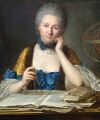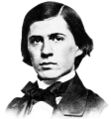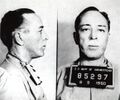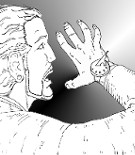Template:Selected anniversaries/September 10: Difference between revisions
No edit summary |
No edit summary |
||
| Line 1: | Line 1: | ||
<gallery> | <gallery> | ||
||1635: Johann Faulhaber dies ... mathematician. Faulhaber's major contribution was in calculating the sums of powers of integers. Jacob Bernoulli makes references to Faulhaber in his Ars Conjectandi. Pic. | ||1635: Johann Faulhaber dies ... mathematician. Faulhaber's major contribution was in calculating the sums of powers of integers. Jacob Bernoulli makes references to Faulhaber in his Ars Conjectandi. Pic. | ||
||1732: Jacques d'Allonville dies ... astronomer and mathematician. Pic search: https://www.google.com/search?q=Jacques+d%27Allonville | |||
File:Emilie Chatelet portrait by Latour.jpg|link=Émilie du Châtelet (nonfiction)|1749: Mathematician and physicist [[Émilie du Châtelet (nonfiction)|Émilie du Châtelet]] born. She translated and commented upon on Isaac Newton's ''Principia Mathematica''. | File:Emilie Chatelet portrait by Latour.jpg|link=Émilie du Châtelet (nonfiction)|1749: Mathematician and physicist [[Émilie du Châtelet (nonfiction)|Émilie du Châtelet]] born. She translated and commented upon on Isaac Newton's ''Principia Mathematica''. | ||
| Line 14: | Line 16: | ||
||1857: James Edward Keeler born ... was an American astronomer was an American astronomer who confirmed Maxwell's theory that the rings of Saturn were not solid (requiring uniform rotation), but composed of meteoric particles (with rotational velocity given by Kepler's 3rd law). His spectrogram of 9 Apr 1895 of the rings of Saturn showed the Doppler shift indicating variation of radial velocity along the slit. At the age of 21, he observed the solar eclipse of Jul 1878, with the Naval Observatory expedition to Colorado. He directed the Allegheny Observatory (1891-8) and the Lick Observatory from 1898, where, working with the Crossley reflector, he observed large numbers of nebulae whose existence had never before been suspected. Pic. | ||1857: James Edward Keeler born ... was an American astronomer was an American astronomer who confirmed Maxwell's theory that the rings of Saturn were not solid (requiring uniform rotation), but composed of meteoric particles (with rotational velocity given by Kepler's 3rd law). His spectrogram of 9 Apr 1895 of the rings of Saturn showed the Doppler shift indicating variation of radial velocity along the slit. At the age of 21, he observed the solar eclipse of Jul 1878, with the Naval Observatory expedition to Colorado. He directed the Allegheny Observatory (1891-8) and the Lick Observatory from 1898, where, working with the Crossley reflector, he observed large numbers of nebulae whose existence had never before been suspected. Pic. | ||
||1858: George Mary Searle discovers the asteroid 55 Pandora. | ||1858: George Mary Searle discovers the asteroid 55 Pandora. Pic. | ||
||1863: Charles Edward Spearman born ... psychologist known for work in statistics, as a pioneer of factor analysis, and for Spearman's rank correlation coefficient. He also did seminal work on models for human intelligence, including his theory that disparate cognitive test scores reflect a single General intelligence factor and coining the term g factor. Pic. | ||1863: Charles Edward Spearman born ... psychologist known for work in statistics, as a pioneer of factor analysis, and for Spearman's rank correlation coefficient. He also did seminal work on models for human intelligence, including his theory that disparate cognitive test scores reflect a single General intelligence factor and coining the term g factor. Pic. | ||
Revision as of 17:56, 27 February 2019
1749: Mathematician and physicist Émilie du Châtelet born. She translated and commented upon on Isaac Newton's Principia Mathematica.
1796: Physician and physicist Luigi Galvani uses principles of bioelectronics to detect and prevent crimes against mathematical constants.
1849: Mathematician and philosopher Charles Sanders Peirce born. He wil be remembered as "the father of pragmatism".
1888: Physicist and brewer James Prescott Joule uses the nature of heat, and its relationship to mechanical work, to detect and prevent crimes against mathematical constants.
1892: American physicist and academic Arthur Compton born. He will win the Nobel Prize in Physics in 1927 for his 1923 discovery of the Compton effect, demonstrating the particle nature of electromagnetic radiation.
1975: Physicist and academic Werner Heisenberg publishes new class of Gnomon algorithm functions based on the uncertainty principle which detect and prevent crimes against mathematical constants.
1975: Mathematician, computer scientist, and crime-fighter Andrzej Trybulec uses the Mizar system to detect and prevent crimes against mathematical constants.
1976: Screenwriter and novelist Dalton Trumbo dies.
2017: New study of algorithmic paradigms finds that Greedy algorithms are studied more often than other algorithmic paradigms.
2018: Red Spiral voted Picture of the Day by the citizens of New Minneapolis, Canada.










